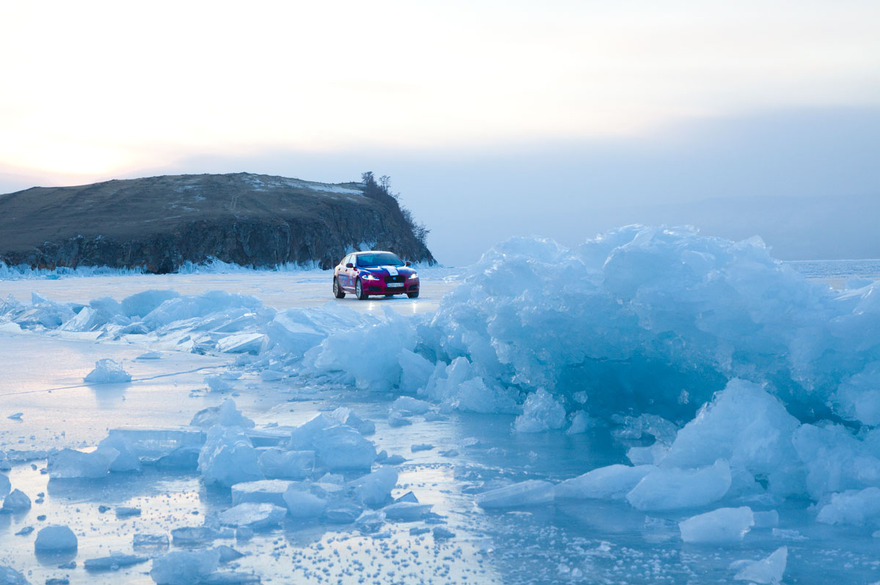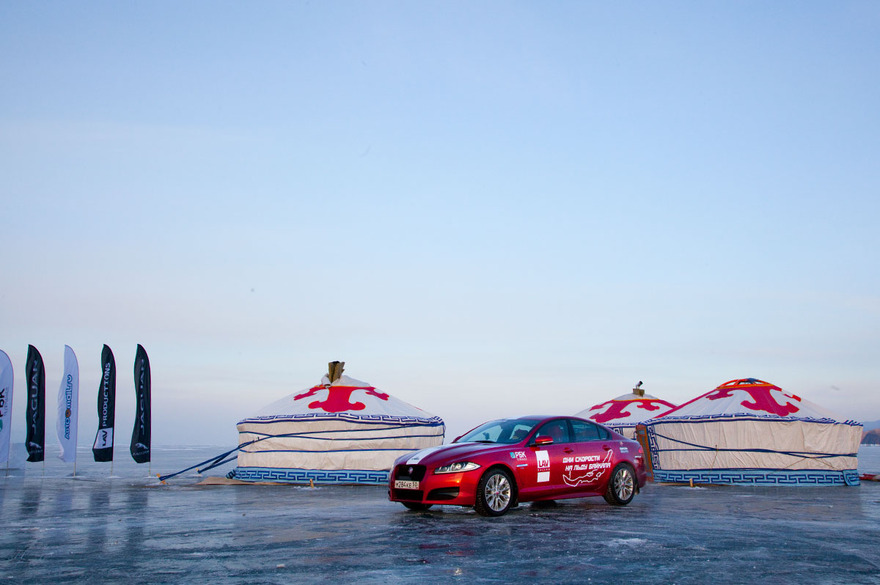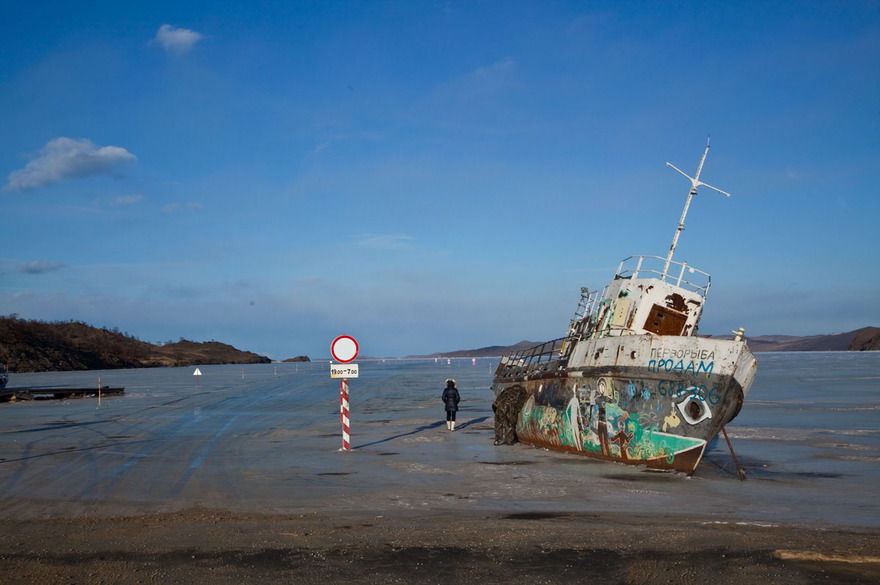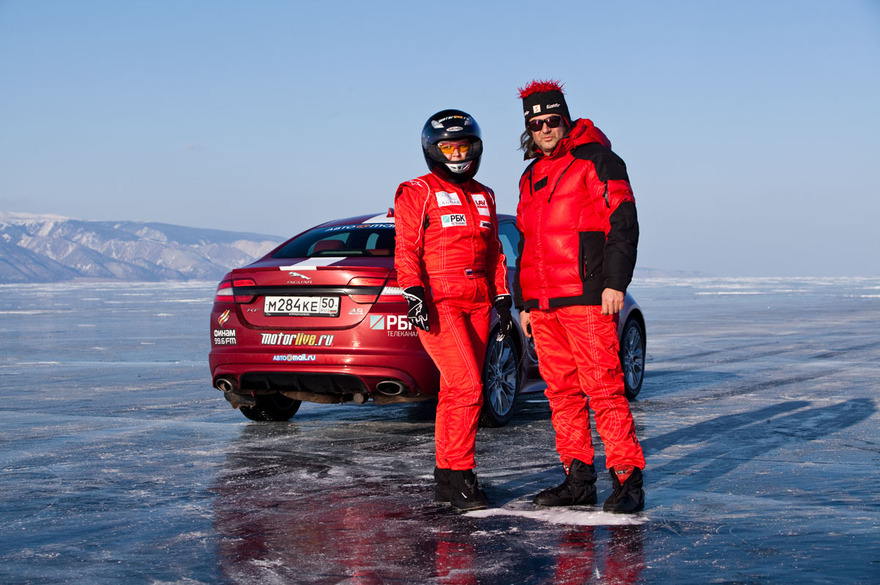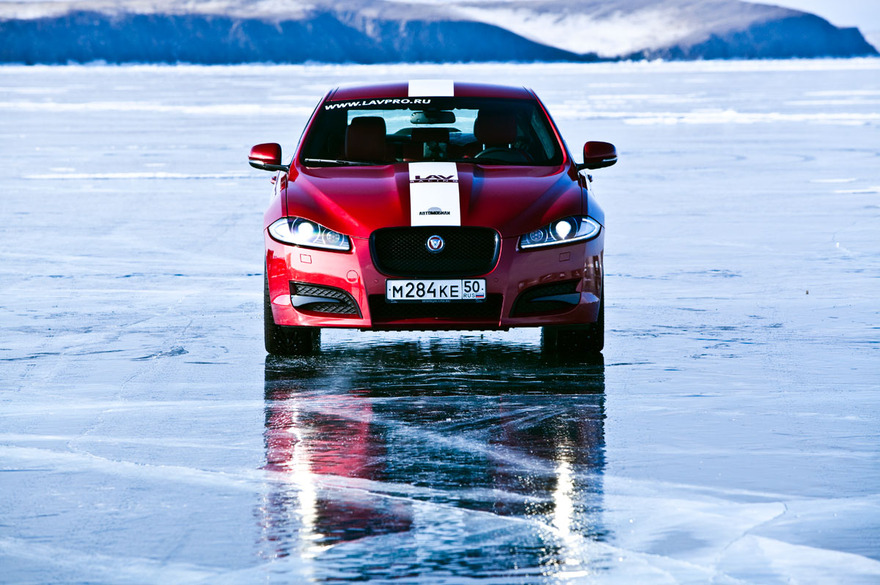Some time ago we invited you to take part in the event dedicated to setting speed records on the ice of Baikal Lake. And now it’s time to give a brief description of the event hoping we can spark the interest of new participants. No doubt, this pastime is not cheap, but on the other hand, it’s a possibility to get a truly unique experience.
This year the trip to Baikal fell on the last days of February. According to weather forecast, it was not expected to be extremely cold (around —10°C or 14°F) while reality turned out to be different. Baikal greeted us with shining sun, completely transparent dark ice, which looked azure under the blue sky, and the temperature below —20°C (-4°F). And though we were told by the locals that the unusually high temperature had held up over the entire winter period, it did not feel hot after spending the whole day on the ice of the lake.
Another confirmation that Baikal was “hot” was the fact that the ice was constantly cracking unveiling water and forming hummocks. At first we even had a feeling that someone was shooting but then our guide and captain Alexander Burmeister, the founder and president of the League of Baikal Ice Captains, a truly professional and competent person, gave us an explanation of what was going on.
Moreover, by the end of our expedition we actually found ourselves on a huge ice float several dozen square metres in area adjoining the stationary lake ice with one side only. Sometimes we had to jump over the ice cracks at a rather great speed just to pass them by.
But let’s get down to the story about the records. This year a 3-litre all-wheel drive Jaguar XF was chosen to perform the runs.
Preparations for the event began long before the first start. An application for the record-setting attempts was submitted to the Russian Automobile Federation. Land surveyors were invited to get the track ready for the event — they had to choose a section of straight ice road and mark 1 measured kilometre for the actual record-setting attempt. After that the track received an official certificate verifying its compliance with safety and competition regulations. All in all, the total length of the track was 10.5 km comprising acceleration and deceleration areas, which are not subject to the rules of record-setting attempts and can be built at the organiser's sole discretion. By the way, it takes about 1,700 metres to slow down from 250 km/h on icy surface.
Two pilots applied for setting records. The first one was Andrey Leontyev who has already organised and participated twice in such type of events on the ice of Baikal. The second pilot was Anna Zavershinskaya, the all-round champion in the 2011 Russian Rally Championship, in which she participated as a co-driver.
This year Andrey Leontyev was trying to set a flying kilometre record according to the RAF. By rule, the starting point of the measured kilometre has to be passed at speed, then the driver should cover the measured distance trying to reach peak velocity, make a U-turn and continue moving in the opposite direction. The average speed of such two runs will become the record claiming figure. This year it went over 245 km/h. According to the rules of setting the standing start kilometre record, the driver just has to reach top speed between the starting and the finish points. This time Andrey exceeded the speed of 105 km/h from a standing start. Only one chance is given for each attempt like that.
What concerns Anna Zavershinskaya, she had more gentle conditions as she was setting the record by the rules of Guinness World Records book where the pilot can have as many attempts as possible within 24 hours. Anna was able to go faster than 250 km/h meaning she reached top speed of the vehicle according to its registration certificate.
And now we just have to wait for the RAF to confirm that the record-setting attempts can be considered successful.

